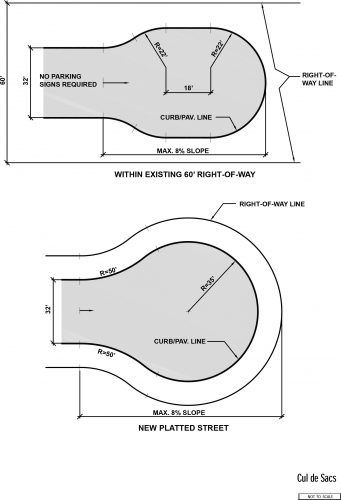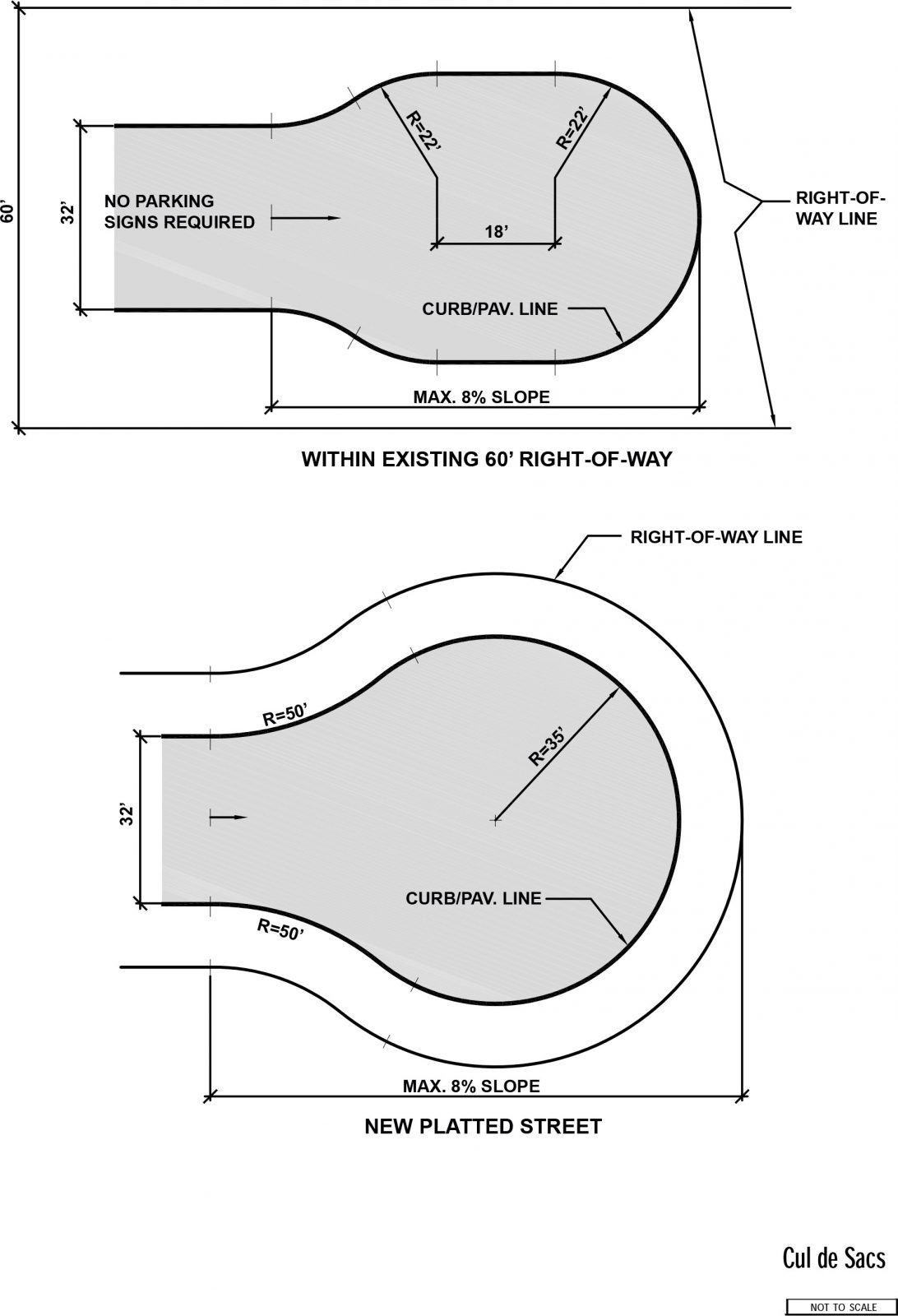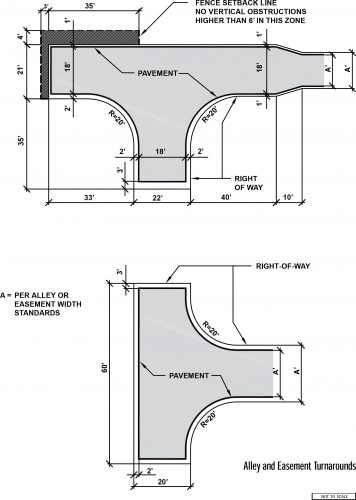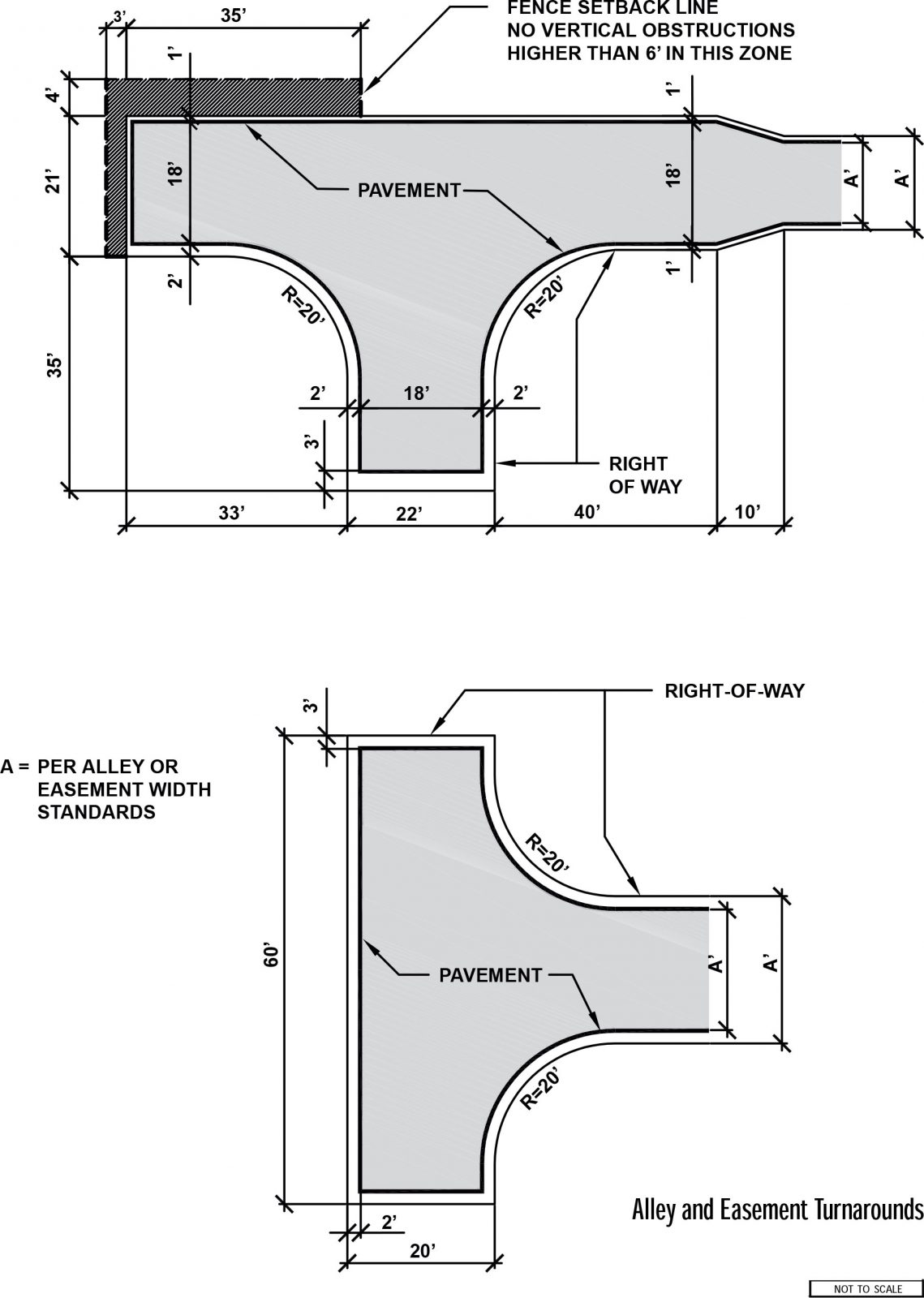Turn Arounds and Cul-de-Sacs
- Design Criteria
On this page:
For network connectivity we prioritize through street connections. However existing right-of-way limitations or existing topography conditions might preclude this.
Design Criteria
Determination of through street: SDCI, in consultation with SDOT, shall determine when a street does or does not have the potential to become a through street. When a street does not connect through a cul de sac or turnaround is required. Dedication of additional right-of-way width may be required to accommodate the turnaround.
Cul-de-sac and turnaround design: Refer to Figure F: Cul de Sacs and Figure G: Alley and Easement Turnarounds for turnaround designs approved by the SDOT Traffic Engineer.
Turnarounds: Shall be designed to accommodate the types of vehicles using the street, alley, or easement. Maximum longitudinal slope permitted for a cul-de-sac or turnaround is 8%.
Alley turns and turnarounds: Turnarounds are required at alley dead ends when the connecting street is an arterial. Figure G: Alley and Easement Turnarounds and Figure F: Cul-de-sacs illustrate alley turns that are approved by the SDOT Director for SF, L1, and L2 zones. All other zones will need individual review. The turn shall be designed to accommodate the types of vehicles using the alley. Alternate designs may be proposed, and are subject to approval by SDOT.
The Fire Department may require additional criteria for cul-de-sacs or turnarounds and alley turns or turnarounds when needed for adequate fire access. Refer to Seattle Fire Code Appendix D for more information.




